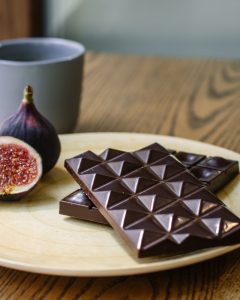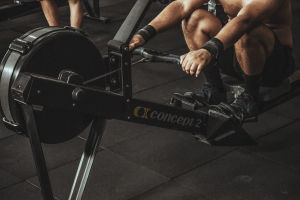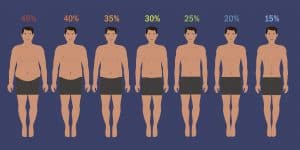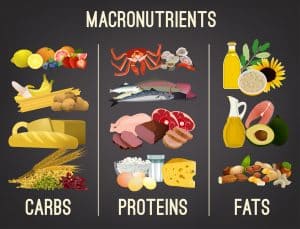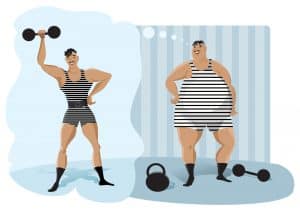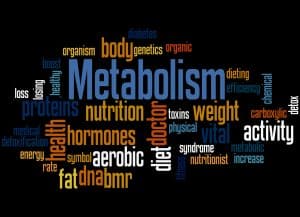I used to go to the gym nearly every day and yet I struggled to see results, not only in my physique but also in my endurance and strength. I just didn’t understand why my body wasn’t changing.
I knew I had to switch it up in the gym, and that’s when I heard about HIIT workout. This is a popular term that refers to high-intensity interval training. It’s a combination of low-intensity exercise and short bursts of high-intensity activity, with a short rest period in between.
Guess what? HIIT helped me transform my body. Now I want to help you achieve your fitness goals, whether that’s losing fat or achieving a more muscular shape.
Health Benefits of HIIT
Everyone’s talking about HIIT. Naturally, you must be thinking, “What’s all the fuss about?” Well, this form of exercise is connected to a lot of health benefits. Let’s take a closer look and see what it can do for you.
The benefit of HIIT that’s always mentioned is the opportunity to burn more fat than other forms of exercise. If you’re trying to lose weight, it could help you to shift stubborn fat easier and faster. It’s worth a try if you’ve been like me and struggled to shed the pounds.
Studies have found that HIIT can lead to more fat loss than low-intensity workouts. What’s more, you can enjoy a higher 24-hour energy expenditure too. This means that you’re burning calories for up to 24 hours after your workout. Sounds great, doesn’t it?
HIIT has also been linked to improving blood vessel function, which may lower the risk of suffering a heart attack or stroke in the future.
One study concluded that participants suffering from metabolic diseases enjoyed better cardiorespiratory fitness after HIIT than those who performed modern intensity exercise. This included cardiovascular limitations, such as high blood pressure and metabolic syndrome.
But the health benefits don’t stop there. HIIT may even be linked to improved cognitive performance, after a study involving children. Who knew exercise could give you brain power too?
Four Examples of HIIT Workout Plans
When I first heard about HIIT, I knew I had to try it for myself. Now I’m going to pass on my wisdom so you can do the same. You can see whether HIIT lives up to the hype.
Spoiler alert: It does and you’re going to love it.
The great thing about HIIT is that you’re not limited to one type of cardio. In fact, you can apply this type of exercise to pretty much anything. This includes weight training.
But to make it easy to understand, it’s best to explain it in association with running. Of course, once you know the basics, you can adapt HIIT to suit your workout regime.
1. Running and HIIT
Before you begin, don’t forget to warm up. I know you’re excited and want to get straight into HIIT, but this is going to be important to prevent injury. It’s doesn’t have to be anything strenuous, stretching is good. Just enough to get the blood flowing and the muscles ready.
Right, let’s get started on the best part. It’s time to learn about HIIT. First, choose where you want to go running. It can be your local park, wood trails, or even along a quiet sidewalk. After your warm-up, start running at a moderate speed. This should be a pace you’re comfortable with, but that still requires some effort.
This is where the fun begins. After around two minutes, it’s time to sprint. Give it your all for around 30 seconds, using all the energy you’ve got. This is your high-intensity part of the interval training. You should be out of breath by the end of it.
After 30 seconds, you can slow down to your moderate pace again. For two minutes, you’ll keep this speed and this gives you just enough time to recover before your next sprint. The idea is to repeat this process, switching up your intensities up to 10 times.
While there are no rules, HIIT only has to last around 20 to 30 minutes. It’s not about duration; it’s about switching up the intensity. This makes it a great workout if you’re short on time.
2. HIIT on the Treadmill
As I’ve mentioned, HIIT can be combined with almost any exercise. Of course, this includes running on the treadmill. In fact, using a machine can be better than running outside, since it can absorb shock and feel like a softer surface. Plus, you don’t have to run in the cold.
Most importantly, a treadmill can make your HIIT workout a lot easier. You can program the machine to automatically adjust your intervals so you don’t have to manually count in your head how long you have to run and sprint.
3. HIIT on the Elliptical
It’s not just the treadmill where you can enjoy HIIT; you can also switch it up and use this technique on the elliptical too. Cardio doesn’t have to be boring. Once you’ve completed your warm-up, it’s time to kick it up a notch.
On your high-intensity interval, increase the resistance and speed to really push your body to its limit. Once you’ve given it all you’ve got for 30 seconds, you can return to your low-intensity interval.
Your low-intensity interval should be at a slightly slower speed and reduced resistance. This will let you catch your breath and prepare for the next surge of energy. The great thing about the elliptical is that you can also increase the ramp height to give yourself a bigger challenge.
4. HIIT on the Bike
The same goes for the stationary bike. It’s a great workout tool to make HIIT simpler and you can set the speed to suit your fitness levels. You can then concentrate on giving it everything you’ve got.
In truth, HIIT on a bike isn’t a new concept. This is what famous companies, such as SoulCycle, use for their workout classes. But I guess there’s a reason for this—it does make a great workout.
For your low-intensity interval, keep the resistance low. Then turn it up for the high-intensity interval. It’s that simple and yet it can be so effective.
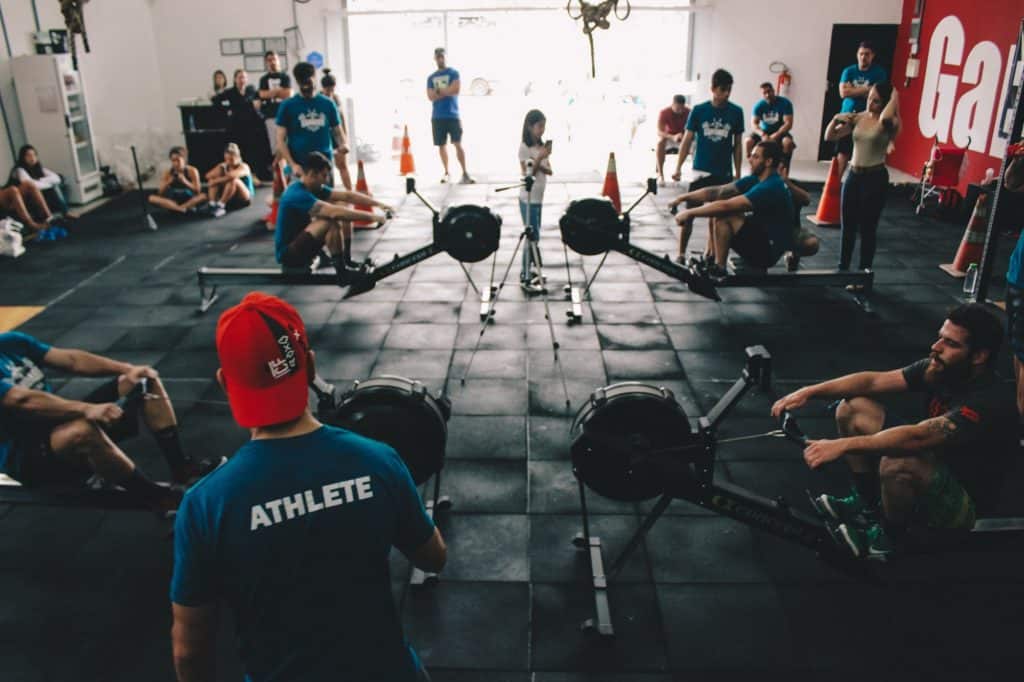
HIIT for Weight Loss
If there’s one thing that nobody ever really wants to do, it’s cardio. Well, the good news is that HIIT can help you shed the pounds without having to run for hours.
If you’re not convinced, think about this study for a second. The participants that completed all-out 30-second sprints on the treadmill four to six times burned more fat than those that walked on a treadmill for 60 minutes. Sounds good, right?
Let’s cut to the chase. You want a HIIT training routine for weight loss. What I would recommend is choosing a type of cardio that you can enjoy. For example, if you like to jump rope, it’s time to get it out for HIIT.
First of all, start with the warm-up we discussed earlier. I’d suggest around five to 10 minutes of light jogging, to get ready for the jump rope. It’s all about loosening up the muscles to get them ready for working out.
Then you’ve got to get to work on the intervals. Let’s start with two minutes of steady-paced jump rope. Ideally, this should be at around 60 percent of your maximum heart rate.
After two minutes, jump straight into your high-intensity interval for one minute. Really challenge yourself to go as fast as you can. You want to push to 85 to 90 percent of your maximum heart rate. Repeat this cardio routine six to eight times.
So the next question you’ll have is, how many times a week should I incorporate HIIT into my workouts to lose weight?
Well, we already know that HIIT cardio should only last around 20 to 30 minutes. I’d recommended between one to two hours of HIIT cardio per week. This should be enough to burn fat.
When you’ve got a busy schedule and work long hours, this can be a manageable training routine. Try to avoid doing HIIT two days in a row. You’ll need some recovery between training sessions.

HIIT for Muscle Toning
If you thought that HIIT was just cardio for burning fat, you can think again. It’s also a great way to achieve a toned body.
For beginners, one of the easiest ways to start toning muscles is by doing push-ups. You don’t need any equipment. You simply use your body weight.
So I’d suggest the following training routine. Do as many push-ups as you can in 20 seconds. Take a short rest and then do it again. This routine should be repeated three or four times. Afterward, you should feel like you’ve been working out a lot longer than you have.
Always remember that proper form is important for seeing results and preventing injury. The last thing you want is to miss out on the gym for several weeks because your bad form caused a muscle strain.
Over time, you should aim to increase the duration of your high-intensity intervals. This may avoid adaptation and mean better performance.
Oh, and don’t forget to have a stopwatch on you for timing your intervals.
Diet to Maximize HIIT Results
You know what they say: abs are made in the kitchen. There’s definitely some truth to this saying. There’s no doubt that enjoying a healthy diet is important to reaching your goals, no matter what they may be.
Yet, you can reach your goals quicker when you combine a healthy diet with a HIIT routine. It doesn’t matter whether you want to burn fat or gain muscle; you can kill two birds with one stone.
I recommend different approaches, depending on your personal goal.
Burn Fat
- Consume 500 calories less than the daily recommended calories. This should take into account activity levels, age, and sex.
- High protein for supporting muscles.
- Low carbohydrates for increased energy expenditure.
Muscle Building
- Consume 500 to 1000 calories over your daily recommended calories. This will help build muscle.
- High protein to repair and build muscles.
- High carbohydrates to fuel HIIT workouts.

Suggested Supplementation
Supplements can work alongside a healthy diet and may encourage peak performance and improve workout results. While they’re not always necessary for beginners, they may be an option if you’re looking to get more from HIIT later on.
Here are some of the supplements I’d suggest:
- Pre-Workout: This is a supplement that’s taken before you start your training. It may help you enhance your performance and endurance. In particular, one study found that taking a pre-workout before HIIT can improve cardiovascular fitness and lean body mass.
- Fat Burners: Just as it sounds, this supplement may help you burn more fat when combined with HIIT.
- Stimulants: Caffeine is known to give you an energy boost, which can help you kickstart your workout. It may also help you to increase the calories you burn during HIIT. There are studies that show caffeine can improve strength and endurance, too.
Conclusion
HIIT is all about pushing yourself to the limit. It’s go hard to go home. While it may be hard work, the health benefits are difficult to ignore.
Not only can you achieve weight loss goals, but you may also enjoy a lower risk of cardiovascular disease. Hey, you might even enjoy some more brain power too.
Once you get started with HIIT, it’ll all begin to make sense. Following my example for running will introduce you to the physical and mental rewards of this style of workout. You can use HIIT to burn fat or gain muscle; it’s completely up to you.
Don’t forget that you are what you eat. You cannot have a bad diet and still expect to see life-changing results with HIIT. It’s a great workout but it can’t create miracles.
What do you think about HIIT? Have you tried it out before? You can leave a comment below and share your thoughts about this popular fitness craze.




